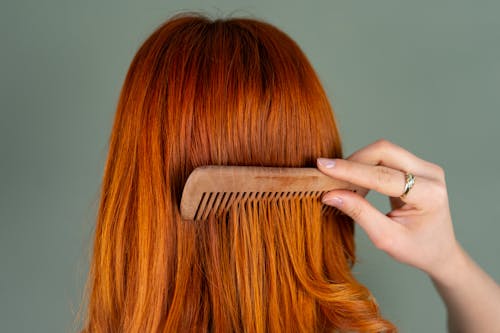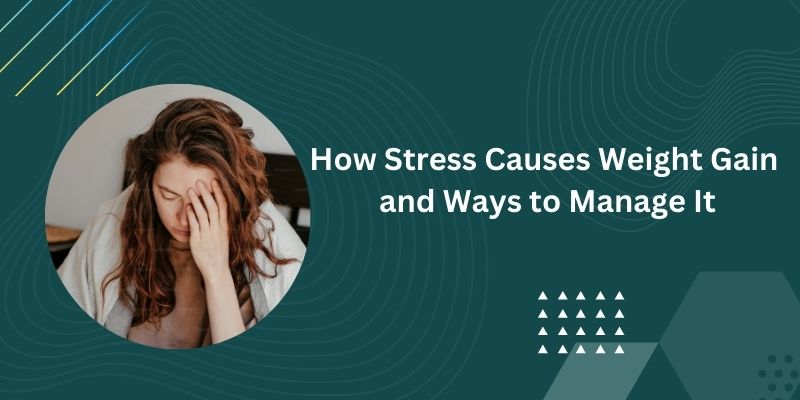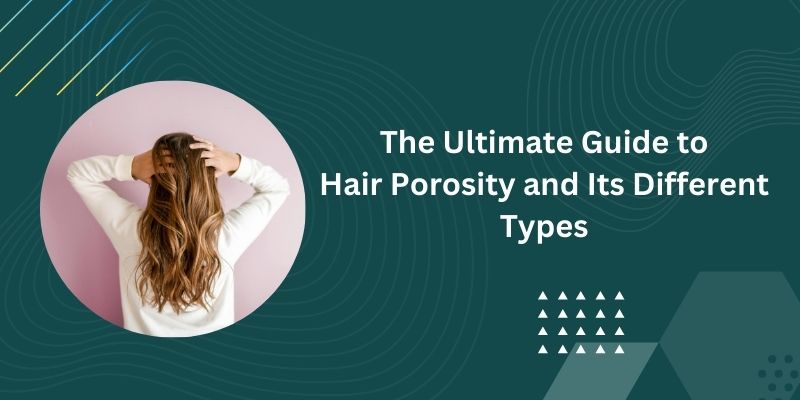What Type of Hair Porosity Do You Have?
Everyone wants long, silky hair that looks flawless. To get radiant hair, you need to adopt some tricks and habits. If you are well aware of your hair texture, you can easily choose the right products and remedies according to the requirements of your hair.
You may have heard the word "porosity" many times but don't know its meaning. Don't worry; this blog will provide a detailed guide about porosity. So, let's start.
Hair porosity is tha ability of your hair to absorb and retain moisture. It can help you identify how your hair reacts to products and treatments. Knowledge of your hair porosity is essential; it can help you build a routine that unlocks your hair's full potential.
What is Hair Porosity?
In simple words, hair porosity is the ability of your hair to lock moisture. Your every strand of hair has the outermost layer of cuticles. These cuticles behave like a door. They allow moisture and lock it. There are three main types of hair porosity: low porosity, medium porosity and high porosity. Each type has its characteristics, challenges, and ideal care routines.

How to Test Your Hair Porosity?
Before explaining each porosity type, it is essential to determine which type you have. Don't worry; it is a simple and detailed procedure, and you can quickly test it at home.
The Water Test
You need to take a clean strand of hair and observe its behaviour. Dip it into a glass of water and see the results. If it floats, your hair has low porosity. If it sinks to the middle, you have medium porosity. On the other hand, if it sinks to the bottom, you have high porosity.
The Slip and Slide Test
Gently run your fingers along a hair strand, from the tip to the base. If it feels smooth, you likely have low porosity. On the other hand, if it feels slightly bumpy, you likely have high porosity.
- The Spray Bottle Test
Take a shower bottle and mix a small section of your hair with water. If the water beads up, your hair has low porosity. On the other hand, if the water is absorbed quickly, your hair will have high porosity.
Low Porosity Hair
Low porosity hair is identified easily by tightly packed cuticles. They are usually placed side by side, which makes it difficult for moisture and products to penetrate. Low-porosity hair is generally shiny and doesn't maintain proper hydration.
Characteristics:
When the porosity test is done, water beads up on the hair rather than soaking in. They Take longer to dry after washing. They are Resistant to chemical treatments like colouring or perming. They are Prone to product buildup, as products often sit on the surface.
Care Tips:
- Use lightweight, water-based products that penetrate easily.
- Incorporate heat when deep conditioning to help open the cuticles.
- Avoid heavy oils and butter that can sit on the hair and cause buildup.
Medium (or Normal) Porosity Hair
If you talk about the ideal type, then it is medium or regular. This is because its cuticles are slightly raised. This raised structure of cuticles allows moisture to enter and stay. This hair type is generally easy to manage and maintains a good balance of moisture and elasticity.
Characteristics
It quickly absorbs moisture and products without becoming oversaturated. It Maintains hydration and retains shine. It requires less frequent maintenance than other types. It Holds styles well, whether natural or heat-styled.
Care Tips
- Maintain balance by alternating between moisture and protein treatments.
- Use gentle, sulfate-free shampoos to preserve the hair's natural oils.
- Protect hair from heat and environmental damage to maintain its healthy state.
High Porosity hair
The characteristic of high porosity hair is cuticles that are raised or damaged. The damage is done due to heat styling and colouring. This structure allows moisture to enter easily but also escape just as quickly. So, they need help to be hydrated.
Characteristics
High porosity hair absorbs water and products very quickly but dries out just as fast. They are prone to frizz, tangles, and breakage. They often appear dull or lifeless without proper care. Also, they are easily affected by humidity and environmental factors.
Care Tips
- High porosity hair benefits from protein treatments that strengthen the cuticle and fill in gaps.
- Use heavier oils like castor or butter like shea butter to seal the hair shaft.
- Avoid overuse of hot tools, harsh chemicals, and rough handling to prevent further damage.

Common Myths About Hair Porosity
There are many misunderstandings about hair porosity that can make hair care confusing. Here are some common myths and the real facts behind them.
Myth 1: High Porosity Hair Is Always Damaged
Fact: High porosity hair is often caused by damage from heat or chemicals, but not always. Some people naturally have high porosity hair due to genetics or their hair type. With proper care, high porosity hair can still be healthy.
Myth 2: Low Porosity Hair Doesnt Absorb Moisture
Fact: Low porosity hair absorbs moisture, but it takes more time because the cuticles are tightly packed. Once moisture gets in, it stays in well. Using heat during conditioning can help improve absorption.
Myth 3: All Hair Products Work for Every Porosity
Fact: Different porosity types need different products. High porosity hair benefits from heavier moisturizers and protein treatments. Low porosity hair needs lighter products that wont weigh it down. Choosing the right products for your hairs porosity is key.
Myth 4: You Can Permanently Change Hair Porosity
Fact: Hair porosity is mostly determined by genetics and your hairs structure. You can improve the condition of your hair with good care, but you cant permanently change its porosity. Tailored routines can help manage its effects.
Final Words
Now, you must have a complete understanding of porosity and its levels. Knowing what type of hair porosity you have is a game-changer for your hair care routine. No matter what type of hair you have, all matters is understanding unique needs and maintaing the best hair care routine accordingly. With the proper care and attention, you can work with your hairs natural ability to keep it looking its best.












